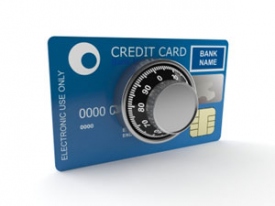
Mobile phones can do more than enable a consumer to buy something anytime, anywhere and with any payment method. They actually can be used to make payments smarter, which can make them more secure. These devices, with their operating systems, internet connectivity, apps, front and back cameras, Beacons, GPS and now even Touch ID can enable the sorts of things that are the equivalent of kryptonite to the cryptocriminals.
Granted, we’re still trying to sort out the difference between a blockchain and a blockhead, but we are pretty convinced that all this software can do a lot of this rule-based, autonomous-agent stuff that’s supposed to be Bitcoin v. 7.0.
For instance.
If tokens can be made smart enough to authenticate a transaction one time, and even expire at a certain time after they’re issued, why can’t software in an app also tie the delivery of the funds that they have authenticated to certain conditions in real time? Like when a car dealer certifies that a car has passed inspection, or when a contract for a new home has been signed by all parties?
If developer communities unleased the power of the mobile operating system, the hardware and the connection to the cloud to ignite the mobile ecosystem via apps, couldn’t they also direct that community to create an almost-perfect authentication scheme using all of the assets inherent in mobile devices and apps?
Fraud systems use analytics to predict patterns of behavior and flag activities that they consider to be out-of-band transacting. But why would they be needed in a world where mobile devices and biometric authentication were the only way to initiate a payment transaction?
Cybercriminals plant malware that finds holes in merchant systems in the hopes of hacking into customer and transaction data. But what if the data were never even available at the merchant location?
We’ll explore this and a whole lot more at Innovation Project 2014 in a conversation led byRichard Clarke, former White House cybersecurity chief and cyber security expert, and 6 C-suite execs who live and breathe this stuff. No pie-in-the-sky talk here, just the right combination of straight talk and big ideas on how to take the investments we’ve made in our payments and financial-services security infrastructure to the next level and head the cyber mercenaries off at the pass.
So get on the list. If you snooze, you might really just lose, and a lot.
The Innovation Project 2014 | March 19, 2014
Uber Solutions for Keeping the Cyber Criminals at Bay | Rethinking How We Keep Payments Safe
Richard Clarke | White House Cyber Czar and Cyber Security Expert
Paul Kleinschnitz | GM for Cyber Security Solutions at First Data
Dave Fortney | SVP | The Clearing House
Shaunt Sarkissian | CEO | Cortex MCP
Jennifer Schulz | President | Experian
Tom Tobin | GM and CTO | Fiserv’s Financial Crime Risk Management Group
George Wallner | Chief Technologist | Loop
Note that Innovation Project 2014 preferred hotel room block expires at midnight on February 25, 2014.